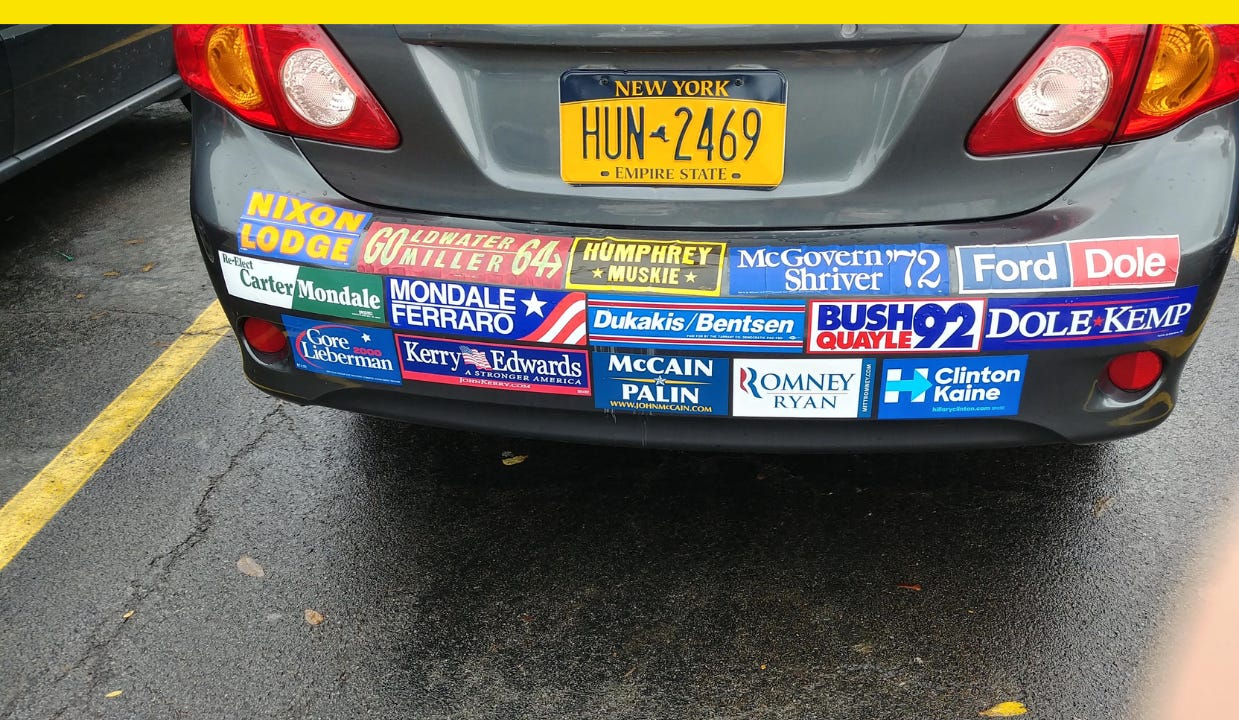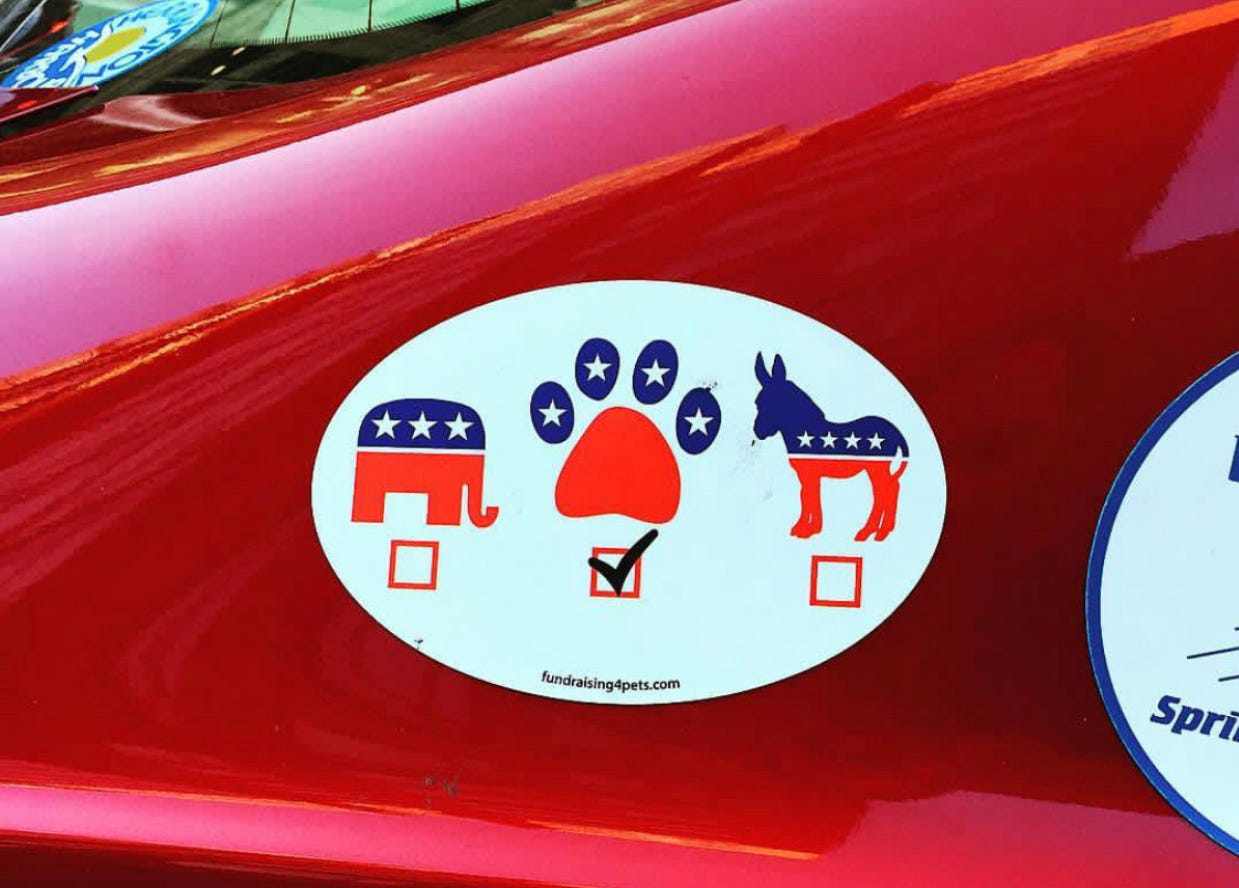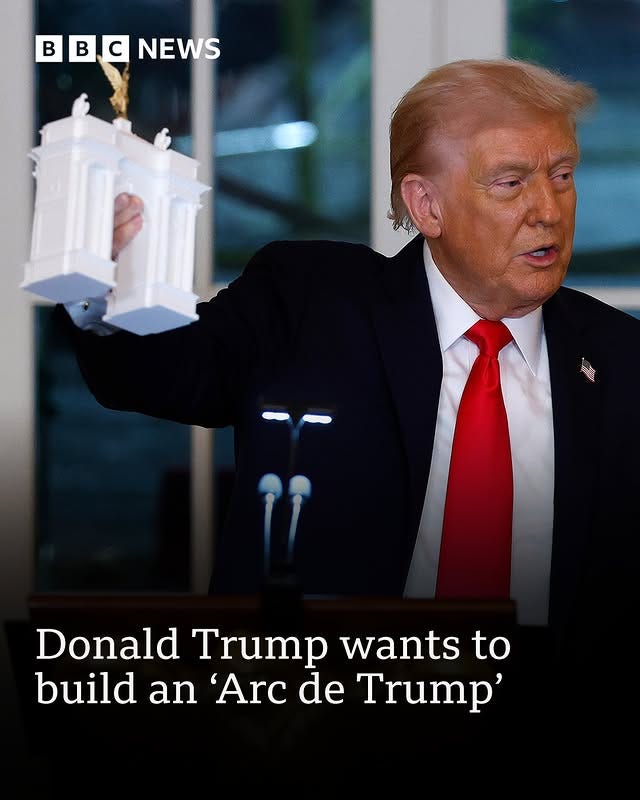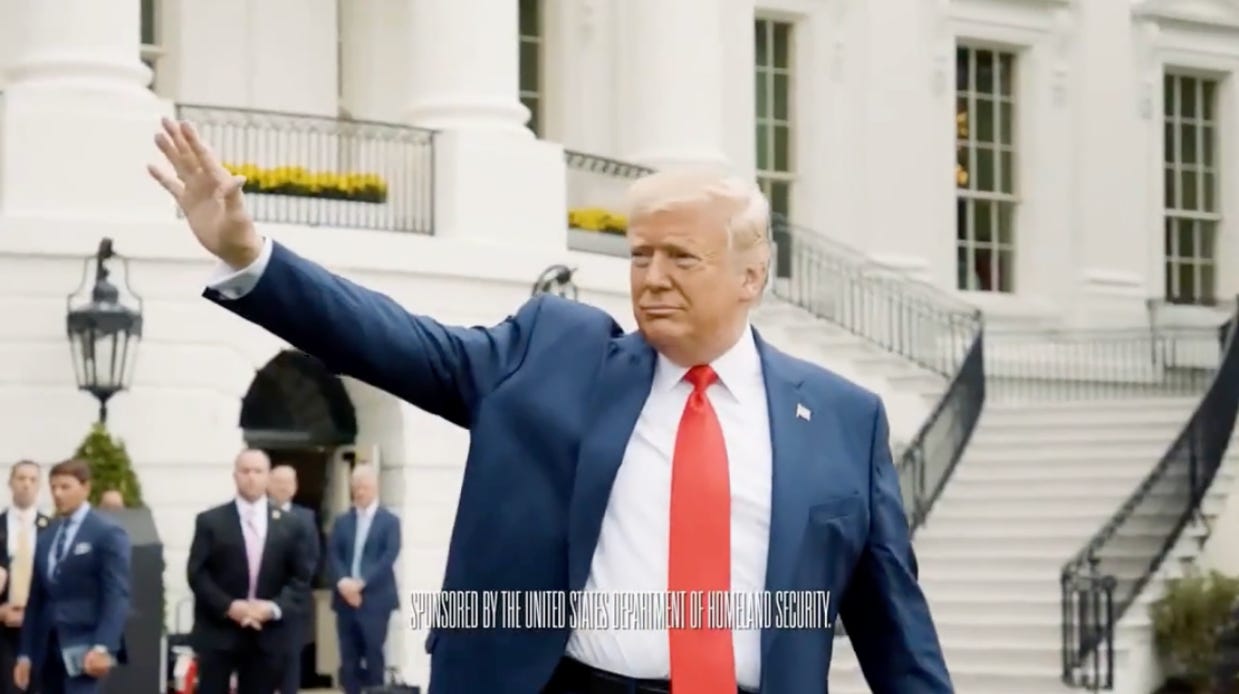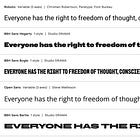Why your political bumper sticker could be a driving hazard
Plus: Are you a U.S. taxpayer? You’re paying for the most expensive political ad campaign of the year.
If you have a political bumper sticker on your car, please drive safe.
Of course, we should all check our blind spots before changing lanes and use our turn signals no matter what we drive, but new research suggests that motorists who wear their politics on their bumpers should be extra considerate when driving. A study published in Frontiers in Political Science found bad drivers in cars with political bumper stickers are more likely to inspire hostility from fellow drivers who don’t share their political party.
The study, conducted by University of Cincinnati assistant professors Ben David Farrer and Rachel Torres and published last month, tested participants by showing them a video made by a digital artist to resemble dash cam footage.
The video showed an orange sedan pull into view, and the driver either drove well or poorly, swerving into the right-hand lane and forcing the point-of-view driver to brake hard. Different versions of the videos showed the car with either a bumper sticker that said “Proud Democrat,” “Proud Republican,” or “I Love My Dog,” or it didn’t have a bumper sticker at all. The results of the survey probably won’t surprise you.
Before watching the video, participants were first asked about factors like partisan identity and self-assessed driving skills, as well as personality traits like agreeableness (which researchers said is a personality trait that’s strongly correlated with driving outcomes…), and authoritarianism (…which is associated with hostile behavior and being less willing to forgive other drivers who are perceived as having broken a rule).
They were then shown one of eight dash cam videos followed by one of six driver’s licenses created to identify the driver of the car they just watched. Participants then were asked to rate how likely they would be to honk at the driver on a five-point scale from “very unlikely” to “very likely.” While honking isn’t always meant to be aggressive, researchers wrote that it’s the primary way drivers communicate hostility to each other.
Researchers found the likelihood of honking at bad drivers with no bumper stickers was 2.59 on the five-point scale, and that likelihood rose to 3.12 if the bad driver had an out-partisan bumper sticker.
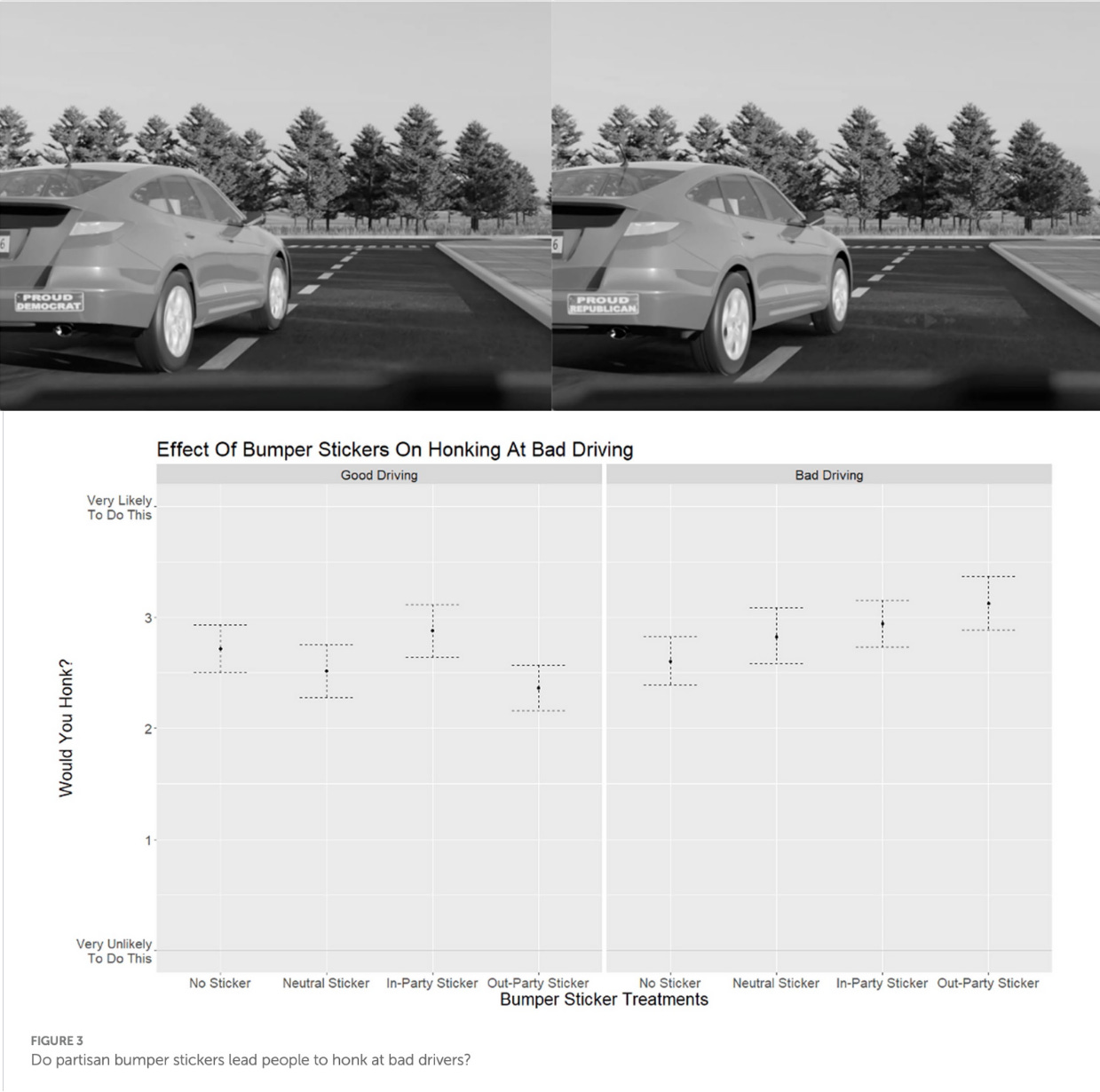
The study found a similar correlation when participants were asked to rate the driver on a feeling thermometer. Participants felt most warmly towards bad drivers with no bumper stickers and they felt most coldly towards bad drivers with an out-party bumper sticker. The study’s authors wrote that “partisan bumper stickers, whilst innocuous when things are going well, have the potential to trigger dangerous hostility when things are going badly.”
The bumper sticker was invented in the 1940s by Forest Gill, a Kansas City print shop owner who found that he could make stickers for cars using self-adhesive paper and Day-Glo paint. By the 1960s, they became table stakes for political campaigns in the U.S. where a burgeoning car culture was blossoming in a country that had federally invested in its highways. Today, however, political bumper stickers are in decline, per The New York Times. Maybe when it comes to road safety, that’s for the best.
“Most messages are aggressive,” If You Can Read This author Jack Bowen told the Times about political bumper sticker messages. “There’s this sort of screaming back and forth, and you’re much more likely to scream ‘Your candidate is lame’ than ‘My candidate is good.’ Anyone with a sticker is the type of person who wants to be heard.”
Combine that with bad driving, and you’re potentially looking at a recipe for road rage if the stars misalign.
It’s a free country, of course, and you can stick the messages you want to on your vehicle, but please be safe. And bumper sticker or not, perhaps the most important lesson we can take from the study when navigating politics on the road is one we’ve seen on countless bumper stickers before: coexist.
Trump wants to build a new monument
Arc de Trump.
Trump wants to build a new monument across from the Lincoln Memorial that resembles the Arc de Triomphe in Paris. At a White House event Wednesday, Trump proposed building the monument for America’s 250th birthday on a spot called Memorial Circle near the Arlington Memorial Bridge that’s on the Virginia side of the Potomac but still technically in D.C.
CBS News reporter Ed O’Keefe asked Trump about the model of the monument on his desk Wednesday, asking “Who is it for?” Trump said “Me. It’s going to be beautiful.” Cool, gotcha.
Nicolas Leo Charbonneau, partner and principal at Harrison Design, posted an artist’s rendering of an arch monument last month that Trump has posted on his social network himself, and it resembles the model on his desk. “America needs a triumphal arch!” Charbonneau wrote on X.
Are you a U.S. taxpayer? You’re paying for the most expensive political ad campaign of the year.
At least $51 million has been spent this year airing ads thanking Trump.
The Department of Homeland Security, or DHS, has spent at least $51 million airing ads thanking Trump for securing the border, according to data from the ad tracking firm AdImpact shared with Axios. It’s the most expensive political ad campaign of the year, ahead of the $41 million being spent in support of California’s Prop 50 to redistrict the state.
Though DHS denies the ads are political, they mention “President Trump” more than any other phrase. “Thank you, President Donald J. Trump for securing our border, for deporting criminal illegal aliens, and for putting America first,” Homeland Secretary Secretary Kristi Noem says in the 60-second spot “The Law.”
DHS has bought about $9 million worth of ad time on Fox News, more than any channel, while morning shows including Today, CBS Morning, and Good Morning America had the most program-specific spending, per AdImpact. DHS’s Immigration and Customs Enforcement, or ICE, is also running recruitment ads, and Noem is also the face of videos filmed to air in airports blaming Democrats for the ongoing government shutdown, though the biggest airports in the country have all declined to air it.
Have you seen this?
Portland’s protests are getting ridiculous. That’s the point. Protesters in cities like Portland, Oregon, are using humor to reveal the absurdity of MAGA’s claims about them, joining a rich history of clowning against authoritarianism. [Fast Company]
Trump’s focus on looks — from “central casting” to “those lips.” One of Trump’s most notable quirks is his willingness to comment publicly on people’s physical appearance — women or men, heads of state or military commanders, White House reporters or his own staffers. At a time when other public figures often minimize such comments to avoid appearing sexist or superficial, Trump seems to revel in such judgements. [The Washington Post]
Sora 2 and Bob Ross are a match made in A.I. hell. The new A.I. video app from ChatGPT maker OpenAI is pumping out huge quantities of Bob Ross content. [Artnet News]
Unions are trying to stop Trump from kicking out immigrants over social media posts. The Trump administration’s heightened monitoring of immigrants’ social media accounts seeking grounds to revoke their visas stifles the speech rights of both noncitizens and citizens alike, the Electronic Frontier Foundation alleges in a new lawsuit. [The Verge]


